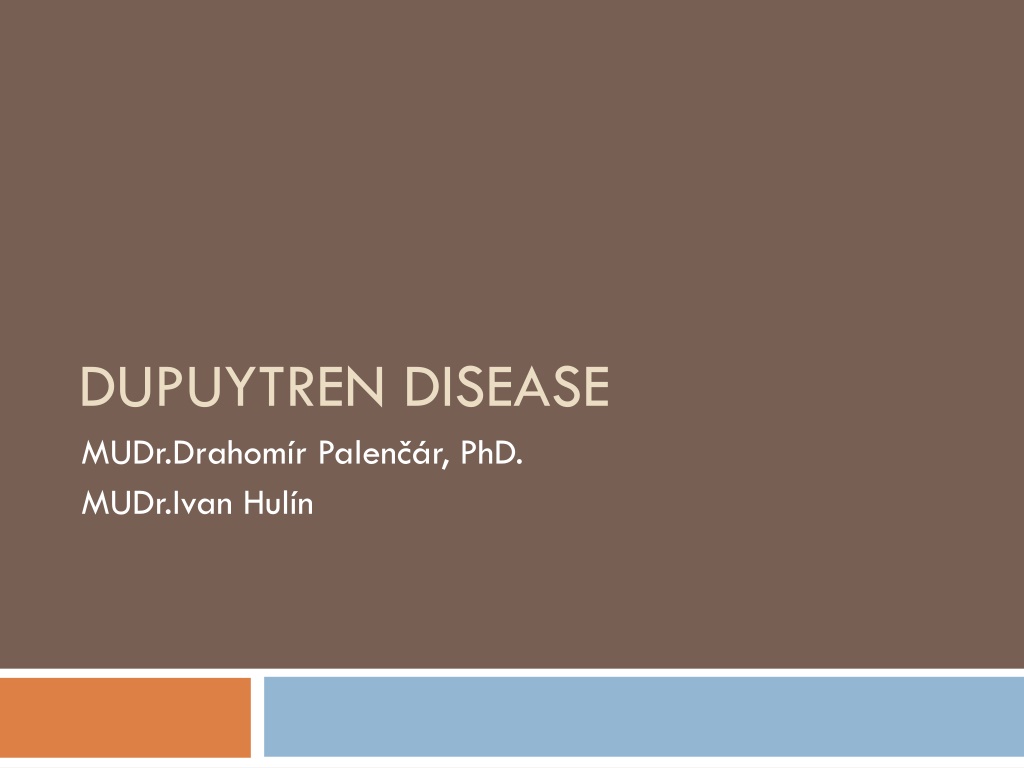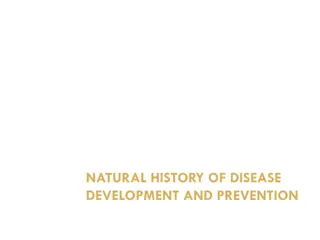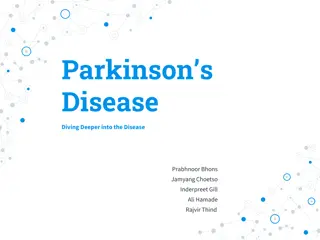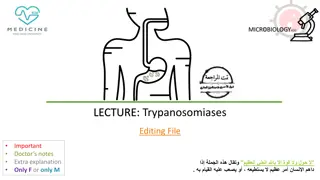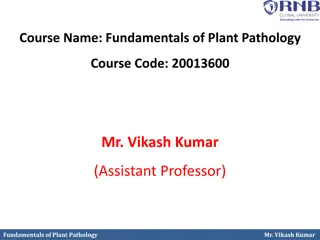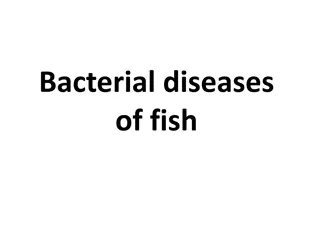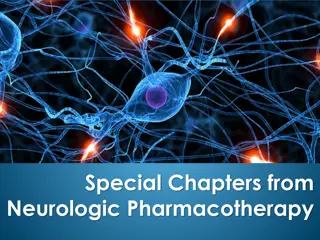DUPUYTREN DISEASE
Dupuytren's disease is characterized by fibrotic nodules and bands in the palmar aponeurosis, leading to flexion deformities in the fingers. The etiology is unclear, with higher incidence in Europe. Clinical presentation varies, with treatment options including collagenase injections, needle aponeurotomy, and surgical aponeurectomy.
Download Presentation

Please find below an Image/Link to download the presentation.
The content on the website is provided AS IS for your information and personal use only. It may not be sold, licensed, or shared on other websites without obtaining consent from the author.If you encounter any issues during the download, it is possible that the publisher has removed the file from their server.
You are allowed to download the files provided on this website for personal or commercial use, subject to the condition that they are used lawfully. All files are the property of their respective owners.
The content on the website is provided AS IS for your information and personal use only. It may not be sold, licensed, or shared on other websites without obtaining consent from the author.
E N D
Presentation Transcript
DUPUYTREN DISEASE MUDr.Drahom r Palen r, PhD. MUDr.Ivan Hul n
Characteristic Pathologic findings in palmar aponeurosis Fibrotic nodules and bands superficial from tendons and nerovascular structures Secundar flections of MCP a PIP joints 1831 marquise Guillaume Dupuytren (1777-1835)
Ethiology, Pathofysiology Not clear The role of myofibroblasts Higher amount of colagen type I. Luck classification: 1. proliferative fasis 2. involution fasis (usporiadanie v smere ahu) 3. rezidual fasis (acelul rny vzh ad) Nowadays we think it is proliferative and mechanical process. The role of cytikynes stimuls for fibroblasts
Incidence Europe. Kelts China and Africa low incidence Decreasing from north to south of Europe (Viking s disease) Ratio male : female = 7,5 : 1 Incidence is increasing with age Geografic difference (maximum Australia, France, Scotland, Ireland 17% Other parts of body plantar (Ledderhose), IPP
Clinical course Simple classification 1. palmar form 2. fingers form 3. finger-palmar form Tubiana classification N nodules and bands N1 5 degree contracture Stage 1 4 (severe contracture on one finger at least)
Degree of contracture Stage Clinical signs N 0 Nodules and bands N/1 0-5 Mild contracture 1 6-45 2 46-90 3 91-135 4 More than135
Treatment and indications Collagenase Tubiana 1 and 2 Needle aponeurotomy Tubiana 1 and 2, or 3-4 before operation Surgical aponeurectomy Tubiana N, N/1 no treatment Rehabilitation is very important
Treatment N N/1 1 2 3 4 Collagenase ++ ++ Needle aponeurotomy + ++ ++ + + Surgical aponeurectomy + ++ ++ ++ + relative indication ++ highly indicated
Complications Hematoma, infection, digital nerve injury, skin necrosis, hand swelling. Complications total - 19 % Algoneurodystrofic syndroma 10 % (Sudeck syndr.)
